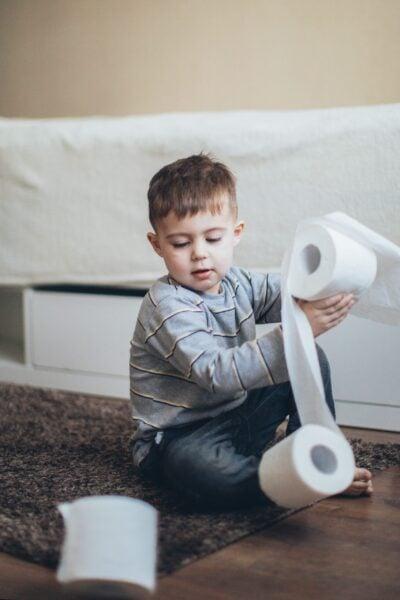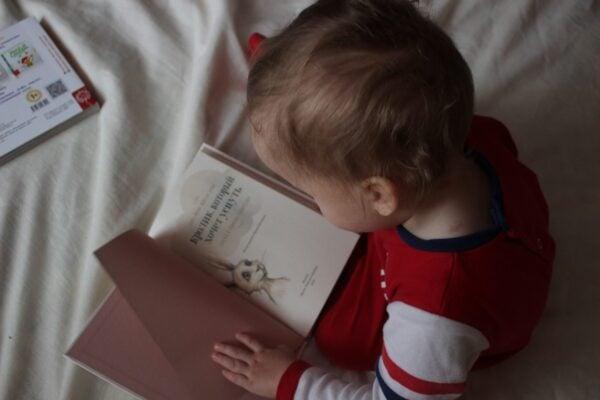Let’s talk about potty training for naps and bedtime. First off, potty training is a very big and exciting time for you and your toddler. It’s a big step forward in independence and it means your life is about to get a lot easier (and less expensive!)
A big part of potty training is the concern for how it will affect your toddler’s sleep. Many parents wonder if potty training will disrupt their toddler’s sleep and how exactly to potty train for naps and bedtime.
If you’re anything like me, then I’m sure that persevering everyone’s sleep through the potty training process is very important to you. As I’m sure potty training your child quickly and successfully, also is!
In this blog post, I’m going to outline how to potty train your toddler for naps and bedtime and how to preserve sleep along the way.
First steps in potty training
Navigating potty training for naps and bedtime
Tips for preserving sleep while potty training for naps and bedtime
First steps in potty training
The first step in having your toddler potty trained for naps and bedtime is to start with daytime potty training. Especially if you are potty training early, it’s best to focus on daytime potty training first and use pull-ups for naps and night.

Some of my main tips and tricks for starting potty training are:
Set the stage:
3-6 months before you want to start potty training, set the stage by introducing them to the “potty”. Showing them how you use the bathroom, flush and wash your hands, etc. There are lots of great books out there for toddlers that are all about using the potty!
Positive reinforcement:
Children thrive off of positive reinforcement. The most excited you are about this process, the more excited they will be. So crank up your enthusiasm level and get ready for lots of clapping and cheering! Even if it starts as an accident but they end on the toilet, make a big deal out of it and show them how proud you are.
Co-regulation:
Try VERY hard not to make a big deal out of accidents. Your toddler will pick up on your energy and emotions. If they detect that you are stressed about this process, then it will most likely hinder their progress. They will get lots of natural negative consequences on their own (e.g., feeling uncomfortable in wet underwear) so your job is to stay calm and positive.
Incentivize:
Toddlers are at the height of developing their independence, however they are low on reasoning skills, so it’s easy for parents to find themselves in a power struggle with their toddler. We really want to avoid this, as no one wins in a power struggle. So try and focus on how you can incentivize your toddler to want what you want instead of trying to make them to do what you want. Most often, the best incentives are quality time with you. So if you choose to use a sticker chart for example, then they could be working towards a special date with you.
If you are looking for a step by step on how to potty train your toddler in 3 days, I outline my whole process in my “potty training” troubleshooting guide, which you can find in my Toddler Guide Pack.
Navigating potty training for naps and bedtime

Once your toddler is potty trained during the day, then you can start to consider how and when you want to tackle potty training for naps and bedtime. This is going to depend on your little one’s age and level of readiness.
Remember that every toddler and every family is different, so make sure you are going at a pace that makes sense for your little one. We don’t want to push them to learn something new that is beyond their current level of readiness. It’s totally fine if your toddler is potty trained during the day and uses pull-ups for naps and at night for a few years.
With this in mind, as you move towards potty training for naps and bedtime, you may find that when your little one wakes, they immediately pee or poop in their diaper. This is totally normal as it is more familiar and comfortable to them. The big piece to remember here is that we are teaching to their level of readiness. I suggest saying something like, “that’s ok! Next time you can poop in the potty so it’s not so yucky on your bum”. We want to encourage them to WANT to use the potty without putting any pressure on them.
They may also start pooping right before their nap or bedtime as they are winding down to fall asleep. This is also common and natural. They are comfortable and relaxed, and if they are in a pull-up it feels familiar and “safe”. If your toddler is doing it intentionally, that is actually great as it shows they have control over it. We just want to shift this power, not take it away. I would say something like, “oh you had a poop! That’s great! It must be stinky and yucky in that diaper. Maybe next time you can go in the potty so we can just flush it away”.
Tips and tricks for nighttime potty training:
When you start potty training for nighttime, there are some things you can do to help make it as successful as possible.
- Limit liquid intake after dinner
- Ensure that you have provided the opportunity to go potty several times before going to bed (and the last opportunity should be as close to sleep as possible)
- Consider doing a “dream pee” however just like “dream feeds” they run the risk of interrupting their sleep cycle.
- Help your toddler learn to listen to their body. You can do this by providing lots of opportunities for practice during the day and talking through what to do if they wake in the night and have to go potty.
- Consider having a potty in their room so they have quick access to being able to pee when they need to.
- Try putting your toddler to bed a little earlier. Oftentimes, overtiredness can cause little ones to go into a deeper sleep that they don’t wake from to hold their bladder.
Most of all, remember that every toddler and every family is different. There is no benefit to rushing the process, and in fact it can make the process take longer. Go at a pace that feels right to you!
Tips for preserving sleep while potty training for naps and bedtime
Many parents wonder if potty training is going to cause a sleep regression. The key here is to have a good sleep foundation in the first place. We learn better when we are well rested, so having good sleep habits in place is key.

This means optimizing their sleep and ensuring they are able to initiate sleep independently.
If you are struggling with your toddler waking in the night, my recommendation is to give them the comfort they need as well as empowerment when their imaginations get the best of them. Some suggestions are to place a special meaning on a teddy or stuffy, having a picture of you near their bed that they can see when they wake, and reframe any nightmares into silly stories.
It’s important to take away pressure to fall asleep. As I’m sure you can agree, it’s a lot harder to sleep if someone is pressuring you to!
If you are working on potty training at night around the same time that you are transitioning to a big kid bed, it can be easier to do it all at once. Remember to give lots of choice to empower them (choosing their own sheets and new underwear) and work to incentivize them (often working towards a special day date with you can be very motivating).
Bottom line is, we want our toddlers to want what we want. If we can think of it this way, then it really helps eliminate power struggles.
With regard to naps, continue to offer the time and space for your toddler’s nap, however remind yourself that you can’t MAKE your toddler sleep. Your responsibility is to set the boundaries around what nap time looks like (e.g., one hour, in their room) and their responsibility is to decide whether they are going to sleep. Most toddlers hang on to their nap until around 3 and then it becomes a “quiet time”.
This being said, sometimes toddlers actually nap better when potty training! This is because they are working so hard at learning a new skill while they are awake that they are extra tired by nap time!
Recap on potty training for naps and bedtime
Potty training for naps and bedtime doesn’t have to be stressful and it can most definitely happen on your own timeline. Most of all, there are things you can do to preserve everyone’s sleep through the process.
If you are looking for more support, I have everything you need to know about how to potty train, how to navigate power struggles, and what to do when your toddler is getting out of bed, all in my Toddler Guide Pack!
And don’t forget, we are always here to give you one on one support! One of our amazing sleep consultants would love to hop on the phone with you and help you navigate potty training and sleep quickly and successfully!
We’ve got you!

 Chanel earrings, CC dangle earrings in water drop shape adorned with stones and pearls v39
Chanel earrings, CC dangle earrings in water drop shape adorned with stones and pearls v39 